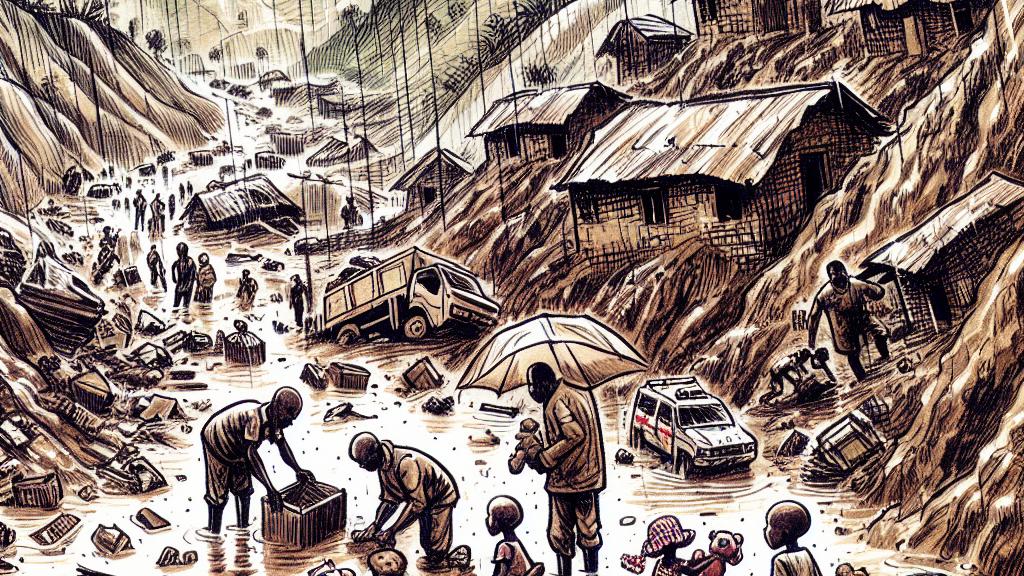Tragic Landslide in Uganda Claims Lives and Homes
Overview
- A catastrophic landslide wreaked havoc in Bulambuli district, eastern Uganda, following continuous heavy rains.
- At least 13 lives tragically lost, with authorities fearing the number could rise as rescue efforts continue.
- Rescue operations face severe challenges from ongoing rain, highlighting the urgent need for improved disaster preparedness.

The Incident Overview
On a grim Wednesday morning, the tranquility of Bulambuli district in eastern Uganda was shattered by a destructive landslide. This natural disaster buried approximately 40 homes under tons of mud, affecting several villages and leaving families shattered. Located about 280 kilometers from the capital city, Kampala, this region is known for its picturesque landscapes but is also vulnerable to the devastating impacts of heavy rainfall. As rescuers from the Uganda Red Cross Society worked tirelessly, the confirmed death toll rose to 13, but discouraging reports suggest that number might climb to at least 30. Most heart-wrenchingly, many of the deceased are children, their small bodies now entwined in the earth, serving as a tragic reminder of nature's perilous power.
The Impact of Heavy Rainfall
This disaster is not merely a tragic incident; it reflects a broader narrative of extreme weather patterns gripping Uganda. Persistent and heavy rainfall has drenched the region, causing rivers to overflow and leading to widespread flooding. Roads have disappeared under the water, and schools have been turned into islands, isolating communities. For instance, local bridges have succumbed to the floods, making it impossible for emergency teams to reach affected areas swiftly. This rise in severe weather events ties back to the chilling impacts of climate change, a global crisis echoing in numerous countries. Extensive research has shown that warmer temperatures lead to increased atmospheric moisture, which, when unleashed, can result in destructive rainfall patterns—patterns we are witnessing now in Uganda.
Rescue Efforts and Community Response
In this dire situation, the resilience of the community shines through amidst chaos. Rescue operations are ongoing, with military support joining local volunteers to dig through the mud and detritus, searching for survivors with an urgency echoing through the devastation. As we see images of neighbors helping neighbors, it underscores the tenacity of the human spirit in crisis. Villagers, equipped with makeshift tools, moved countless kilograms of mud, showcasing their unyielding determination. Yet, as we observe this collective effort, it becomes crystal clear that Uganda must enhance its disaster response strategies. The lessons from this tragedy demand immediate action—investing in early warning systems, improving infrastructure, and fostering community education on disaster preparedness can be the difference between life and death in future events. We cannot ignore; we must learn and evolve to face nature's challenges head-on.

Loading...